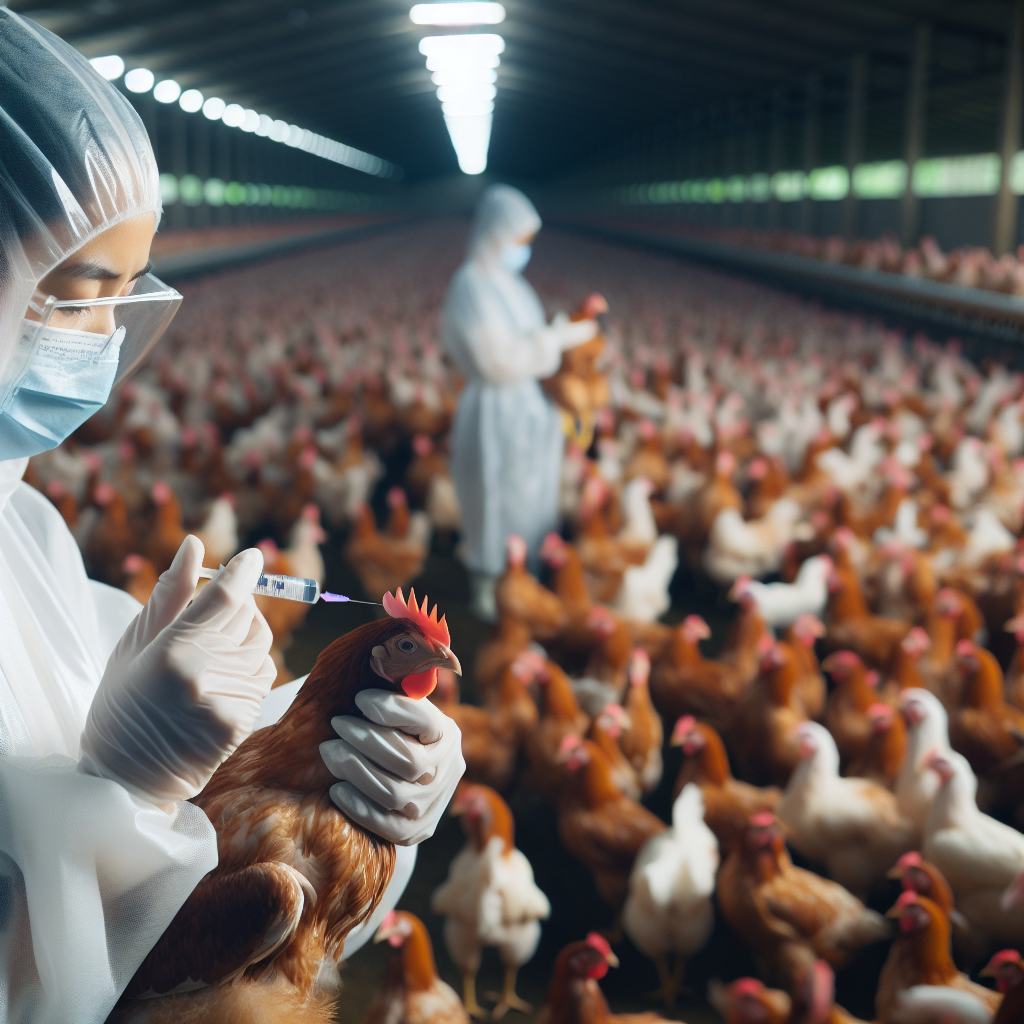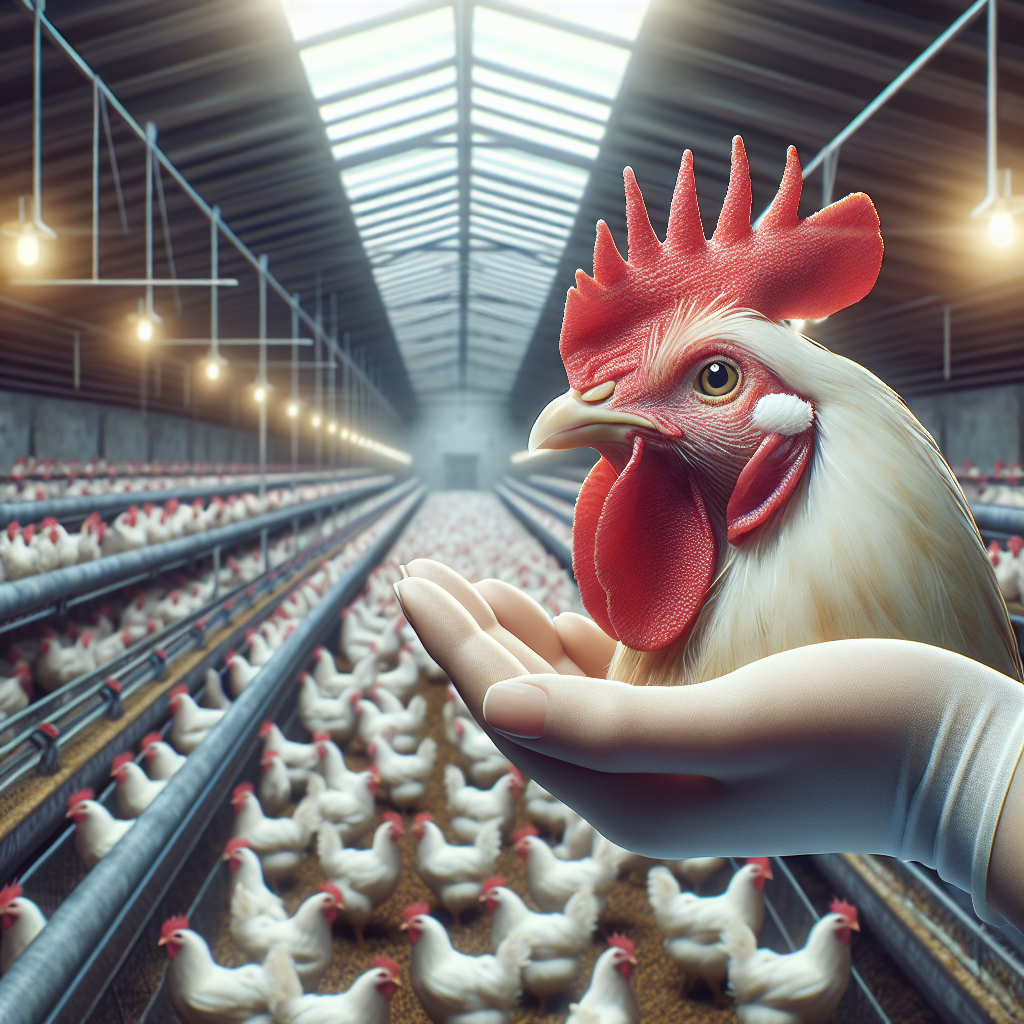Are you curious about how regional regulations tackle disease control and biosecurity in poultry farms? This article aims to shed light on this important topic, exploring the measures implemented by regulatory bodies to protect the health of poultry and ensure the safety of the industry. By understanding these protocols, you will gain valuable insights into the steps taken to prevent the spread of diseases and maintain a secure environment within poultry farms. So, let’s dive in and discover the various ways in which regional regulations address disease control and biosecurity in this crucial sector.
Regulation of Poultry Farms
Poultry farms play a crucial role in providing a steady supply of poultry products, such as eggs and meat, to meet the growing demands of consumers globally. However, the close proximity of birds in these farms exposes them to various diseases, which can have devastating consequences for both the birds and the industry as a whole. To tackle this issue, regulations have been put in place at both the national and international levels to ensure disease control and maintain biosecurity on poultry farms.
National Regulations
At the national level, governments have implemented regulations to safeguard the health and welfare of poultry and prevent the spread of diseases. Legislation and standards are established to set guidelines for poultry farms, outlining the necessary practices and measures that must be followed. These regulations not only focus on disease control but also cover aspects such as animal welfare, environmental sustainability, and food safety.
Government agencies, such as animal health departments and veterinary authorities, play a crucial role in enforcing these regulations. They monitor and inspect farms to ensure compliance and take appropriate measures if any violations are found. Penalties and enforcement mechanisms are in place to discourage non-compliance and maintain the highest standards of disease control in poultry farms.
International Regulations
In addition to national regulations, international regulations and guidelines are also crucial for disease control and biosecurity in poultry farms. The World Organisation for Animal Health (OIE) plays a central role in setting international standards and guidelines for animal health, including poultry. These guidelines provide a framework for countries to establish their own regulations and ensure harmonization in disease control practices globally.
To facilitate trade and prevent the spread of diseases across borders, trade regulations are implemented. These regulations dictate the requirements for importing and exporting poultry products, including measures to prevent the transmission of diseases. Countries may also establish bilateral agreements, outlining specific provisions related to disease control, to further enhance cooperation in this area.
Disease Control Measures
To effectively control diseases in poultry farms, various measures are implemented, encompassing vaccination programs, biosecurity protocols, diagnostic testing, movement restrictions, and culling and depopulation.
Vaccination Programs
Vaccination programs are a cornerstone of disease prevention in poultry farms. Vaccines are available for several common poultry diseases, and their administration can significantly reduce the incidence and severity of outbreaks. These programs involve the regular vaccination of birds, either through individual injection or by incorporating vaccines into their feed or drinking water.
To ensure the effectiveness of vaccination programs, it is essential to follow proper storage, handling, and administration protocols. Vaccines must be stored at the appropriate temperature and administered according to the recommended schedule. Regular monitoring and evaluation of vaccine efficacy are necessary to make adjustments and address any potential gaps in protection.
Biosecurity Protocols
Biosecurity protocols are essential to prevent the introduction and spread of diseases in poultry farms. These protocols include measures such as restricted access, sanitation protocols, visitor policies, and quarantine facilities.
Restricted access limits the entry of unauthorized individuals onto the farm premises. Only essential personnel, such as farm workers and veterinarians, should have access to minimize the risk of introducing pathogens. Additionally, proper sanitation protocols, including regular cleaning and disinfection of equipment, vehicles, and facilities, are crucial to maintain a hygienic environment and prevent the transmission of diseases.
Visitor policies are implemented to control and monitor the movement of visitors entering the farm premises. Visitors must follow specific guidelines, such as wearing protective clothing and footwear, to minimize the risk of introducing pathogens. Quarantine facilities are also important to isolate and monitor new birds or those returning from other locations, ensuring that they are free from any diseases.
Diagnostic Testing
Diagnostic testing plays a critical role in disease control by enabling the early detection of diseases in poultry farms. Various testing methods, such as serological tests, polymerase chain reaction (PCR), and viral isolation, are employed to identify the presence of pathogens. Regular testing, especially during routine health checks or in response to clinical signs, helps to identify diseases early and take prompt action to prevent further spread.
Movement Restrictions
Movement restrictions are enforced to prevent the spread of diseases between poultry farms. These restrictions may include limitations on the movement of live birds, eggs, and poultry products within and between regions. Proper documentation, such as health certificates and permits, may be required for movement, ensuring that only healthy and disease-free birds are transported.
Culling and Depopulation
In cases where disease outbreaks cannot be contained through other measures, culling and depopulation may be necessary. This involves the humane killing of infected birds and those in close contact with them to prevent the further spread of the disease. Culling and depopulation should be carried out promptly and with proper disposal methods to minimize the risk of contamination.
Surveillance and Monitoring
Surveillance and monitoring systems are crucial for effective disease control in poultry farms. These systems involve early detection programs, reporting obligations, and outbreak response plans.
Early Detection Programs
Early detection programs are implemented to identify disease outbreaks as soon as possible. Regular monitoring of bird health and behavior, along with diagnostic testing, helps to detect any abnormal patterns or signs of diseases. Prompt reporting of any unusual findings is essential to initiate timely interventions and prevent the further spread of pathogens.
Reporting Obligations
Poultry farm operators and veterinary authorities have reporting obligations in place to ensure the timely communication of disease outbreaks. This includes reporting to government agencies and relevant authorities, such as animal health departments or the OIE. Timely reporting enables quick response and intervention, reducing the impact of diseases on individual farms and the broader poultry industry.
Outbreak Response Plans
Outbreak response plans outline the steps and protocols to be followed in the event of a disease outbreak. These plans may involve coordination with multiple stakeholders, including government agencies, veterinary authorities, and industry representatives. They outline procedures for disease confirmation, containment measures, communication strategies, and collaboration with external resources to manage the outbreak effectively.
National Regulations
National regulations form the basis for disease control and biosecurity in poultry farms. They encompass legislation and standards, government agencies responsible for enforcement, and the penalties for non-compliance.
Legislation and Standards
Legislation and standards provide the legal framework for disease control and biosecurity measures in poultry farms. They outline the required practices, protocols, and obligations that must be followed by poultry farm operators. These regulations are regularly updated to reflect the changing nature of diseases and advancements in disease control practices.
Government Agencies
Government agencies, such as animal health departments and veterinary authorities, are responsible for enforcing national regulations related to poultry farm disease control. These agencies monitor compliance, conduct inspections, and provide guidance to farm operators on proper disease control protocols. They work closely with other stakeholders, such as the poultry industry and research institutions, to develop and implement effective disease control strategies.
Enforcement and Penalties
Enforcement of national regulations is crucial to ensure compliance with disease control measures on poultry farms. Penalties, ranging from fines to suspension or revocation of licenses, are imposed on those found in violation of regulations. Regular inspections, audits, and investigations are conducted to identify non-compliance and take appropriate action to rectify the situation.
Regional Cooperation
In addition to national regulations, regional cooperation plays a significant role in disease control and biosecurity in poultry farms. This involves collaboration between countries in the same geographic region to share information, resources, and jointly respond to disease outbreaks.
Regional Organizations
Regional organizations focused on animal health, such as regional branches of the OIE, facilitate cooperation among countries in disease control efforts. These organizations provide a platform for sharing knowledge, best practices, and surveillance data. They also coordinate joint initiatives, such as vaccination campaigns or training programs, to enhance disease control capabilities in the region.
Information Sharing
Information sharing is a vital component of regional cooperation in disease control. Countries collaborate to exchange data on disease prevalence, outbreaks, and control measures. This information enables early detection and rapid response to potential threats, bridging gaps in surveillance and monitoring systems.
Joint Response Initiatives
Joint response initiatives are collaborative efforts undertaken by multiple countries in response to disease outbreaks. These initiatives involve sharing resources, expertise, and vaccines to control and manage outbreaks that span across national borders. By pooling their resources together, countries can benefit from collective knowledge and enhance their capacity to respond effectively to emerging diseases.
International Regulations
International regulations and guidelines play a crucial role in disease control and biosecurity in poultry farms. These regulations are established to ensure harmonization and prevent the spread of diseases across borders.
OIE Guidelines
The OIE, as the international reference organization for animal health, provides guidelines for disease control in poultry farms. These guidelines serve as a framework for countries to develop their own regulations and practices. They cover areas such as disease surveillance, prevention, control, and trade-related measures.
Trade Regulations
Trade regulations are implemented to prevent the international spread of diseases through the trade of live birds, poultry products, and by-products. These regulations define the requirements for importing and exporting countries, including disease testing, certification, and quarantine measures. Compliance with these regulations is necessary to ensure the safety and quality of international trade in poultry products.
Bilateral Agreements
Bilateral agreements between countries establish specific provisions related to disease control in poultry farms. These agreements go beyond international regulations and address country-specific concerns and priorities. By working together and sharing knowledge, countries can establish collaborative frameworks for disease control and enhance trade relationships between them.
Role of Government Agencies
Government agencies, such as animal health departments and veterinary authorities, play a pivotal role in disease control and biosecurity in poultry farms. Their responsibilities encompass various aspects, including policy development, regulation enforcement, and funding and support for disease control programs.
Animal Health Departments
Animal health departments are tasked with formulating policies and guidelines for disease control in poultry farms. They work closely with veterinary authorities, industry stakeholders, and other relevant agencies to develop comprehensive strategies for disease prevention, surveillance, and outbreak response. These departments also coordinate research and development efforts aimed at finding innovative solutions to poultry farm diseases.
Veterinary Authorities
Veterinary authorities are responsible for the enforcement of disease control regulations and ensuring compliance on poultry farms. They conduct inspections, investigations, and audits to identify non-compliance and take appropriate actions, including the imposition of penalties. Veterinary authorities also provide guidance and support to farm operators, conduct training programs, and coordinate with regional and international organizations for disease control efforts.
Funding and Support
Government agencies provide funding and support for disease control programs in poultry farms. This financial aid can be in the form of research grants, subsidies for vaccination programs, or support for infrastructure development. By investing in disease control initiatives, governments demonstrate their commitment to safeguarding public health, animal welfare, and the poultry industry.
Challenges and Limitations
While regulations and measures are in place for disease control and biosecurity in poultry farms, several challenges and limitations persist.
Enforcement Challenges
Enforcing regulations and ensuring compliance can be challenging due to the vast number of poultry farms and the diversity of farming practices. Limited resources, both human and financial, can hamper the ability of government agencies to conduct regular inspections and audits. Lack of enforcement can undermine the effectiveness of disease control measures, allowing disease outbreaks to occur and spread.
Lack of Harmonization
International and regional regulations aim to promote harmonization in disease control practices. However, differences in interpretation, implementation, and enforcement of regulations between countries can impede collaboration and the free movement of birds and poultry products. Lack of harmonization can create trade barriers and hinder efforts to control and prevent diseases effectively.
Financial Burden
Implementing and maintaining disease control measures can place a significant financial burden on poultry farm operators. Costs associated with vaccination programs, biosecurity infrastructure, and regular diagnostic testing can be substantial. Small-scale farmers, in particular, may struggle to afford these measures, potentially compromising disease control efforts and risking the health and productivity of their poultry.
Increased Disease Risks
Globalization, travel, and trade have increased the risk of introducing and spreading diseases across borders. The interconnectedness of the global poultry industry means that diseases can quickly spread to multiple countries, impacting public health and the economy. Constant vigilance and collaboration are required to address these emerging disease risks effectively.
Future Directions
To address the challenges and limitations faced in disease control and biosecurity in poultry farms, future directions should focus on advancements in technology and global collaboration.
Advancements in Technology
Technological advancements offer promising solutions for disease control in poultry farms. Innovations in diagnostic tests, such as rapid and point-of-care testing, can enable faster and more accurate disease detection. Remote sensing and monitoring technologies can enhance surveillance capabilities, allowing for early detection of potential outbreaks. The use of data analytics and artificial intelligence can also facilitate predictive modeling and decision-making in disease control strategies.
Global Collaboration
The global nature of poultry farming requires enhanced collaboration and coordination among countries. Sharing information, best practices, and resources through platforms such as the OIE and regional organizations is crucial. Collaborative research efforts can help develop new vaccines, treatments, and strategies for disease prevention and control. By working together, countries can collectively address the complex challenges posed by diseases in poultry farms and ensure the long-term sustainability of the industry.
In conclusion, regional regulations, national regulations, disease control measures, biosecurity measures, surveillance and monitoring systems, and international cooperation all play essential roles in addressing disease control and biosecurity in poultry farms. By implementing and enforcing regulations, adopting effective disease control measures, and promoting international and regional collaboration, the poultry industry can effectively mitigate disease risks, protect animal health and welfare, and ensure a safe and sustainable supply of poultry products for consumers worldwide.




